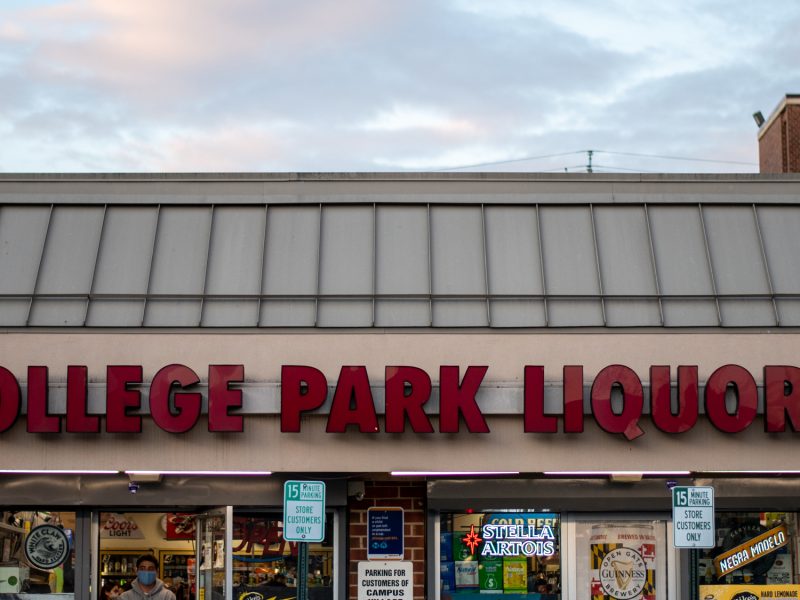Students from the University of Maryland presented their vision for the Lakeland neighborhood to a crowd of current and former residents inside the community’s Embry African Methodist Episcopal Church on Tuesday.
The graduate students’ presentation was for their community planning studio capstone class, in which they’ve spent a semester envisioning the future of Lakeland over the next 10 years. As the students shared their ideas, Lakeland residents said they need to turn their “dream” into real change.
Since the early 1900s, Lakeland has been an established African American community in College Park. From the 1960s to the 1980s, a series of urban renewal efforts pushed Lakeland residents out of their neighborhood. Developers promised to help Lakelanders by redeveloping the neighborhood, renovating homes and safeguarding the neighborhood through flood control. Those promises weren’t kept, according to residents.
About two-thirds of Lakeland residents were displaced, and 104 of the 150 homes in the neighborhood were demolished during urban renewal. Many former Lakeland residents were unable to return after urban renewal due to an increased cost of living and people moving into the neighborhood.
The presentation Tuesday outlined three scenarios for what Lakeland could look like in 2033 — the status quo, reform and revolution. Research focused on housing, land use, community infrastructure and climate change mitigation and adaptation.
If the neighborhood stays the same, the graduate students said, the community’s needs will not be met, especially in the realm of restorative justice.
[Lakeland residents say they want their visions prioritized in restorative justice initiatives]
The neighborhood will be “a small remnant of what was once a vibrant, thriving community” under the status quo option, the presentation said.
The students outlined how College Park’s student housing crisis has encroached on Lakeland. Since 2022, five properties have been sold to landlords. If that trend continues, 100 percent of the neighborhood’s housing stock will be owned by landlords by 2033.
Under the reform scenario, which aims to help Lakeland families remain in and return to the community, residents would have a community right of first refusal. This would give Lakelanders the first chance to purchase homes for sale, before external developers.
The revolution scenario would add housing to the Lakeland neighborhood while preserving some historic blocks of the community. This would include replacing existing homes and constructing gentle-density housing around Lake Artemesia, which would increase the housing stock beyond just single-family homes without building traditional high-rises.
“We need to accommodate more population. There is no other way,” Clara Irazábal, the community planning studio professor and director of the urban studies and planning program, said.
The capstone class’s plans also outlined how Lakeland can increase community connectedness. The students suggested the community reclaim historically significant properties as public spaces, restore access to Lake Artemesia by burying train tracks in underground tunnels and create outdoor community spaces.
Maxine Gross, who chairs the Lakeland Community Heritage Project and the city’s Restorative Justice Commission, worked with the students throughout the semester.
The former College Park City Council member said the revolution pathway is the only real option for the neighborhood.
Otherwise, the losses the community has experienced will only continue and worsen, she said.
“Radical change is what’s needed in order to really address the needs of the community,” Gross said.
Gross said she’s excited by ideas that would allow displaced Lakelanders to return to the community. While she believes students should be able to have affordable housing, Lakeland should not be used as a dorm, she said.
[College Park residents express concerns with proposed Autoville housing development]
She added she would likely not support the concept of knocking down existing buildings, but there may be opportunities to look at adding housing in the area.
But not all residents were sure the students’ plans were actionable, including former Lakelander Dennis Campbell.
Campbell grew up in Lakeland until the late 1970s, when he was a junior in college. His 96-year-old mother still lives in the neighborhood, and Campbell went to the meeting on her behalf, he said.
“On paper, [it] looks great,” Campbell said. “I would love to see that come to fruition, of course, we all would. But is it practical?”
With many of Lakeland’s original families gone, those that are left have given up fighting for their community, Campbell said, which has made it difficult for residents to push for solutions.
“As a people we have always been mistreated, pushed aside, taken advantage of,” Campbell said. “It’s gonna be hard to get reform because of who’s in charge.”
Patricia Middleton, a Lakeland resident, also said she wants to know how and if these plans will come to fruition. While she was wary about some of the larger ideas presented, she said with more community input some changes could be positive for Lakeland.
Middleton said she wants her community to stay family-oriented rather than turning into an extension of this university’s campus. She said she liked the idea of adding benches around the neighborhood and burying the railroad tracks to provide easier access to the lake.
“We would like to see the dream to not just be a reality of just a study, but also be in the living quarters of the Lakeland community where families can come and children can grow up and see a future here,” Middleton said.
The students will present their final report again to the city council in January, according to Irazábal.



